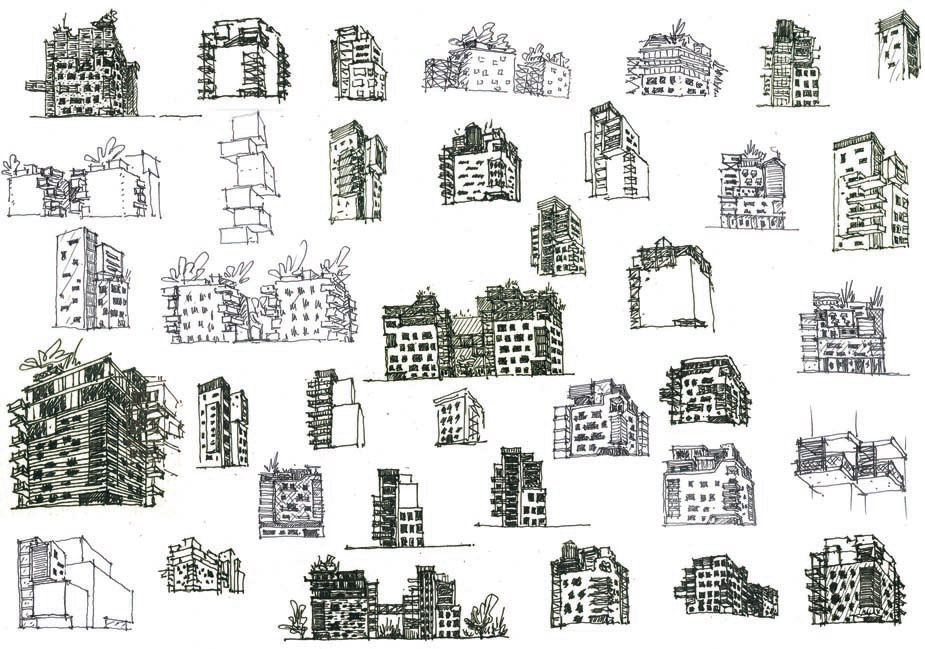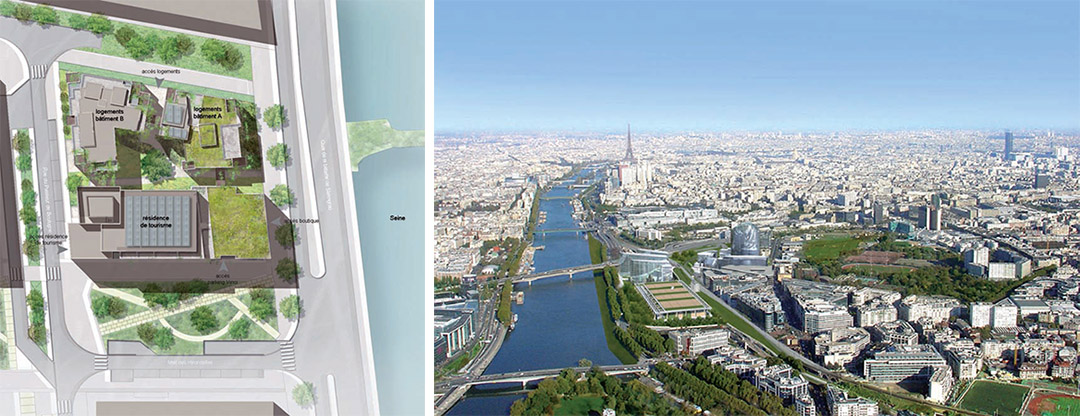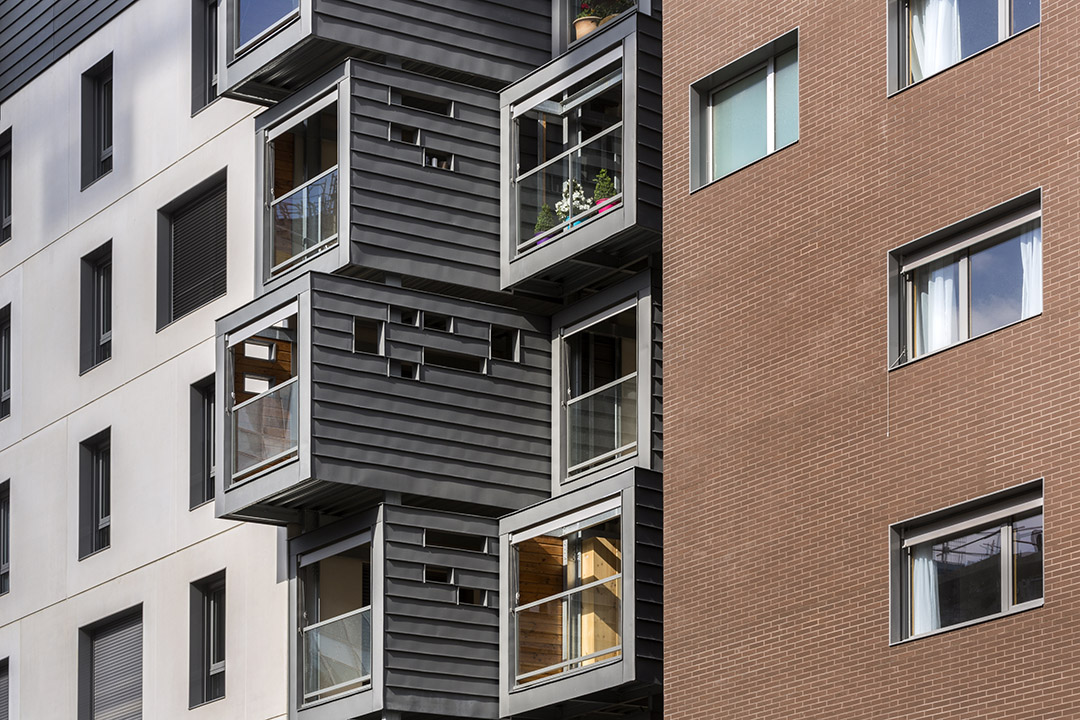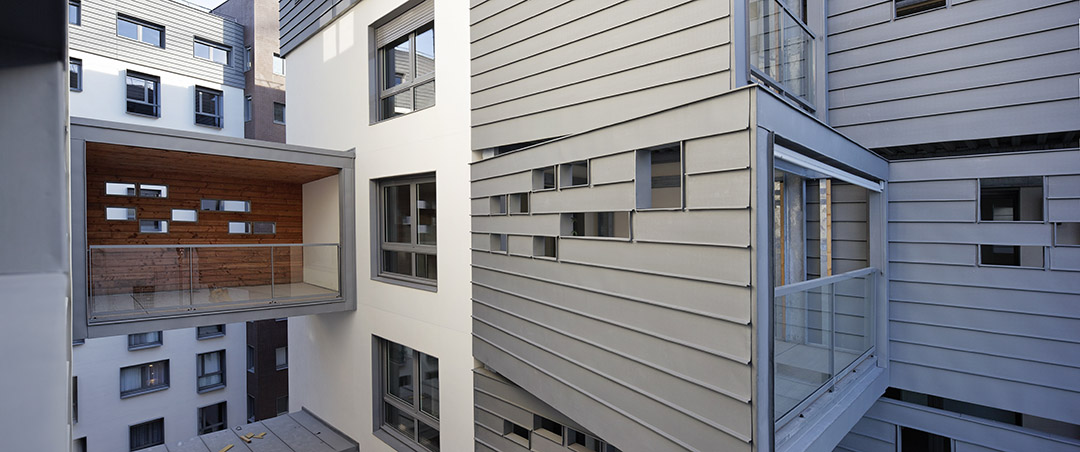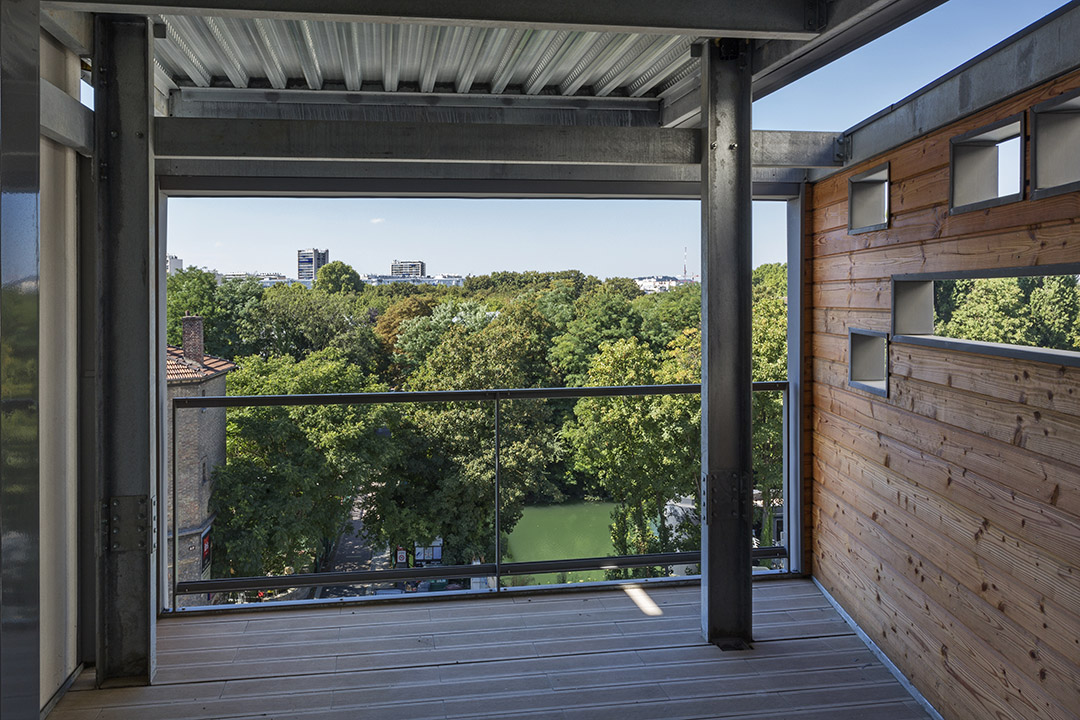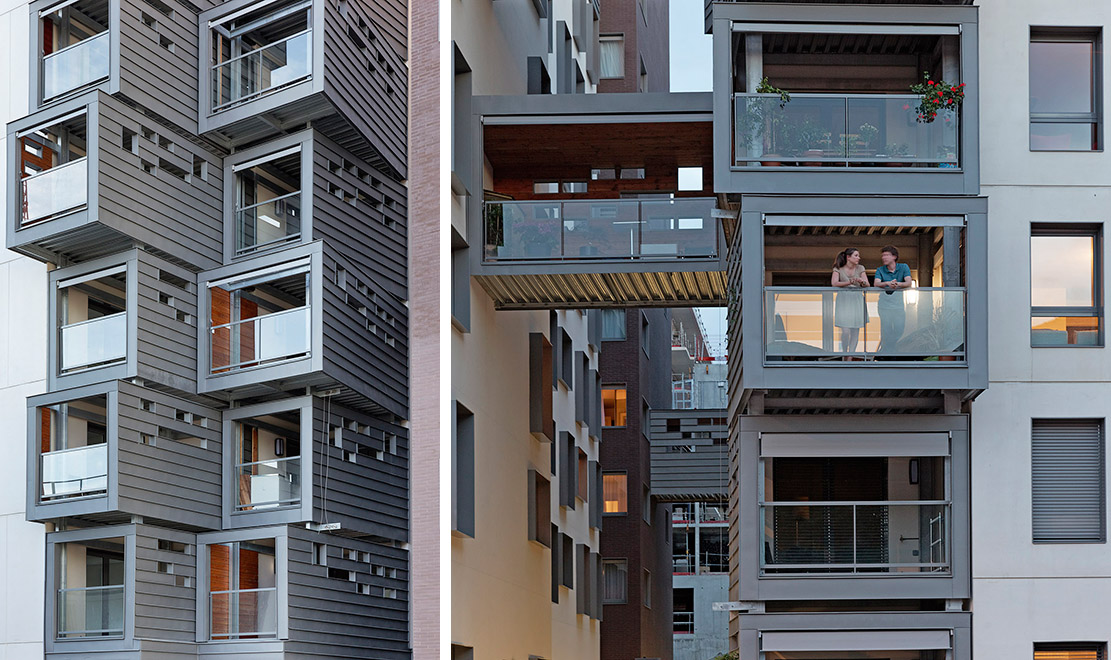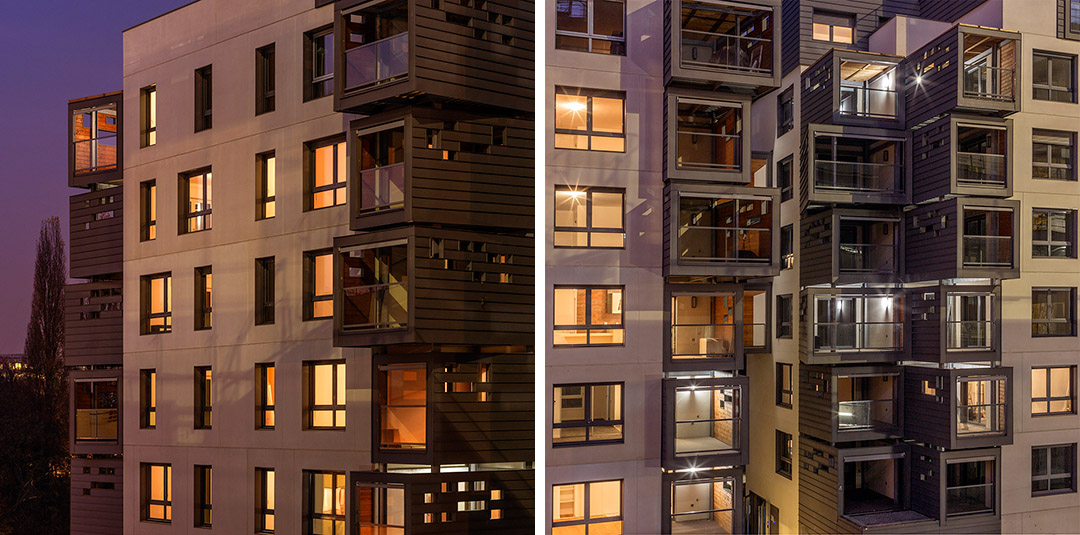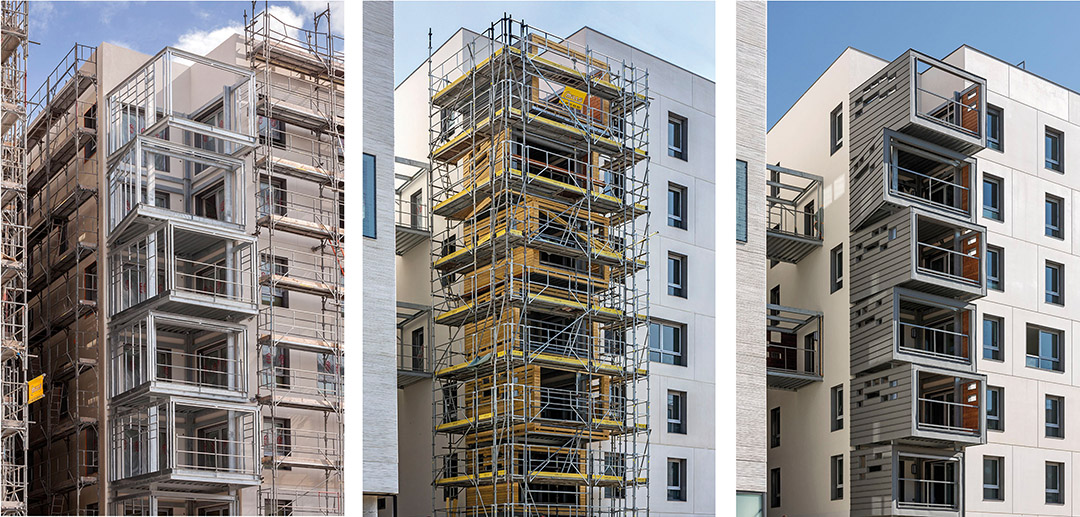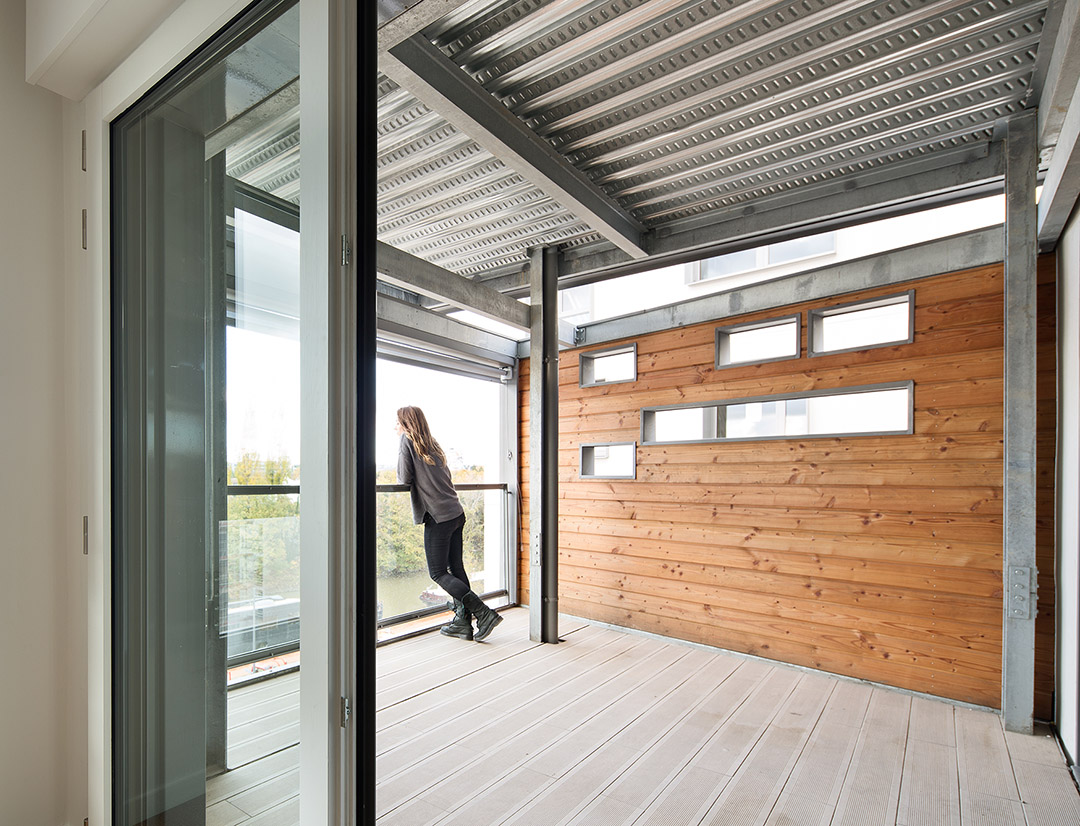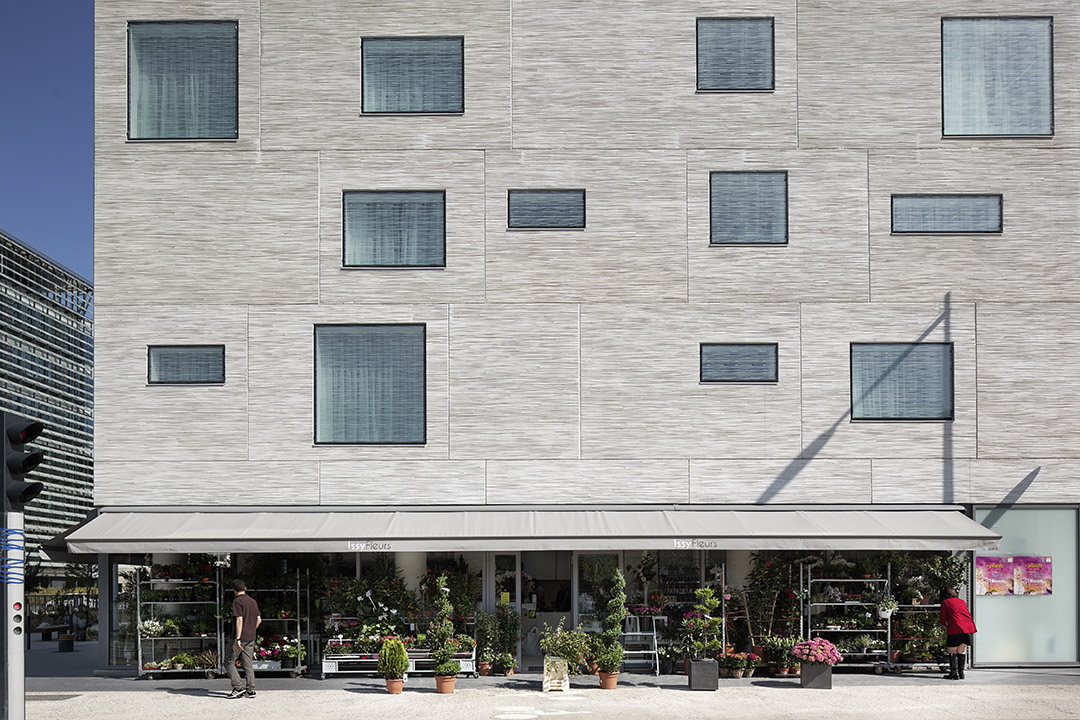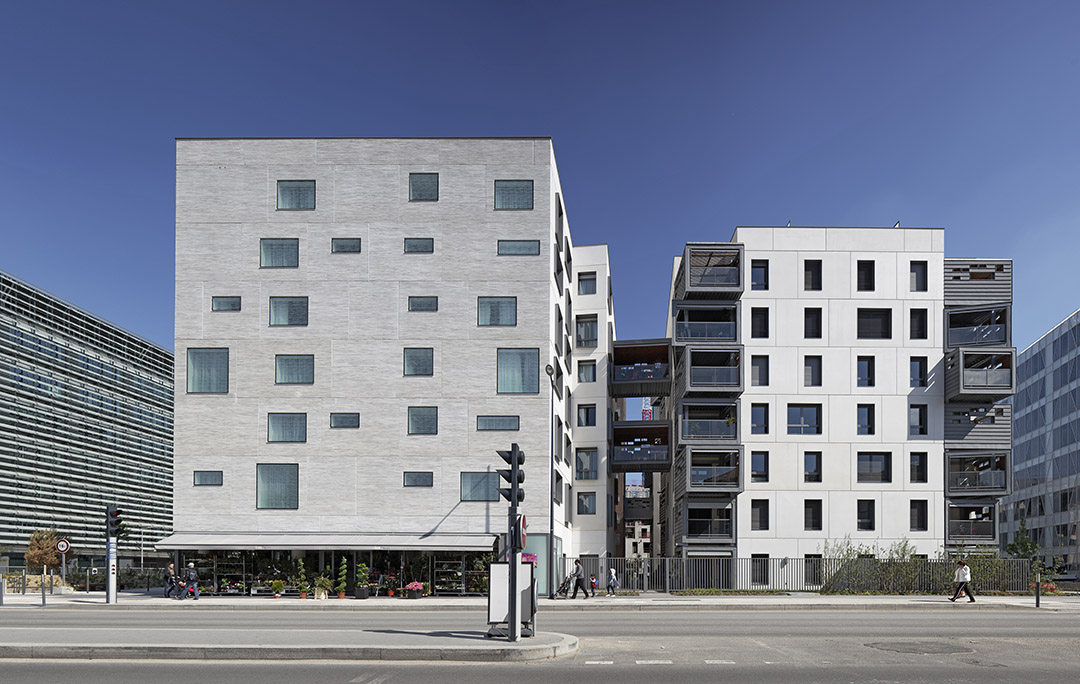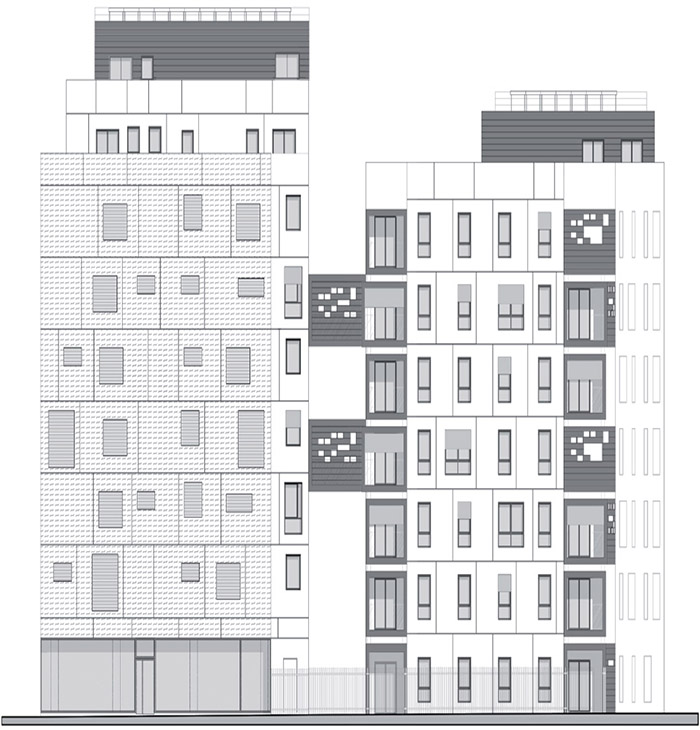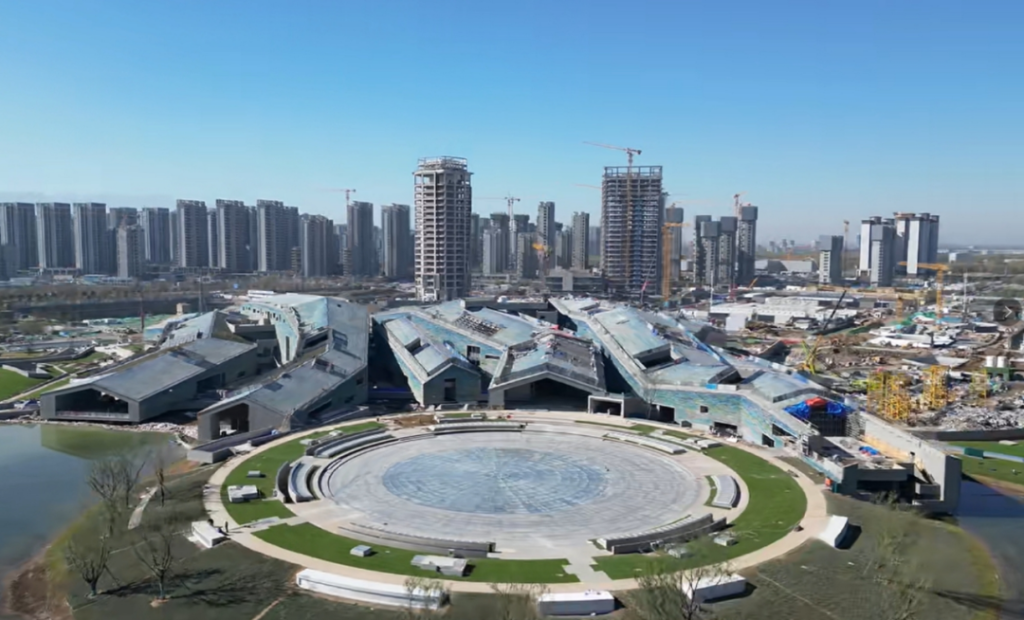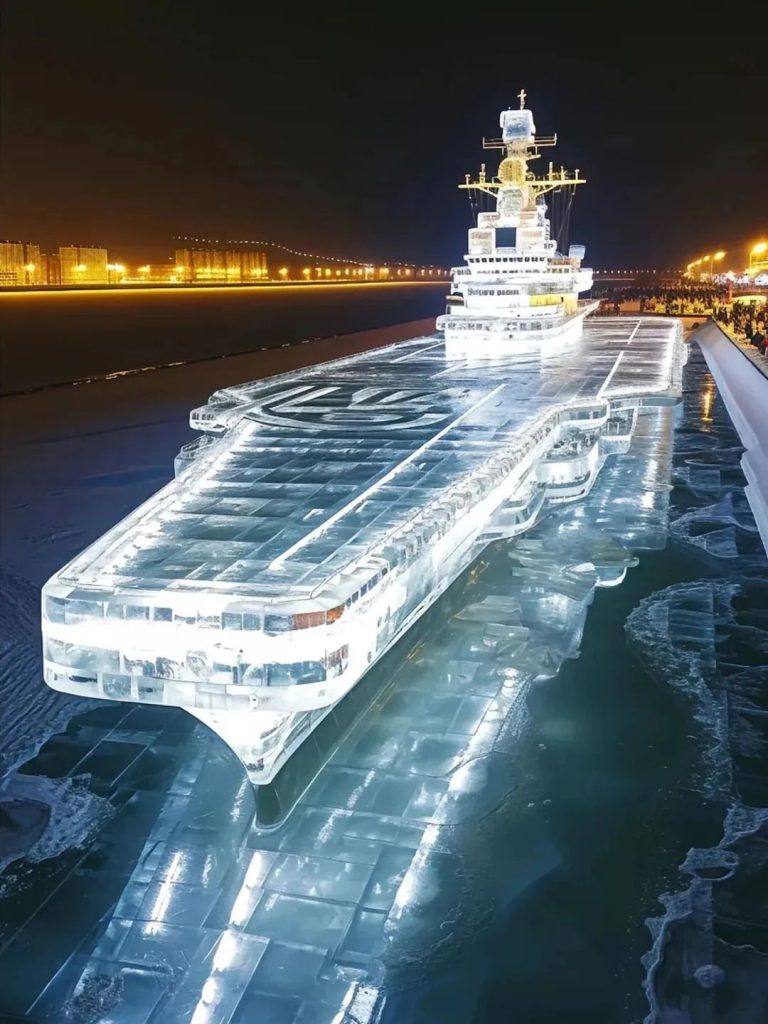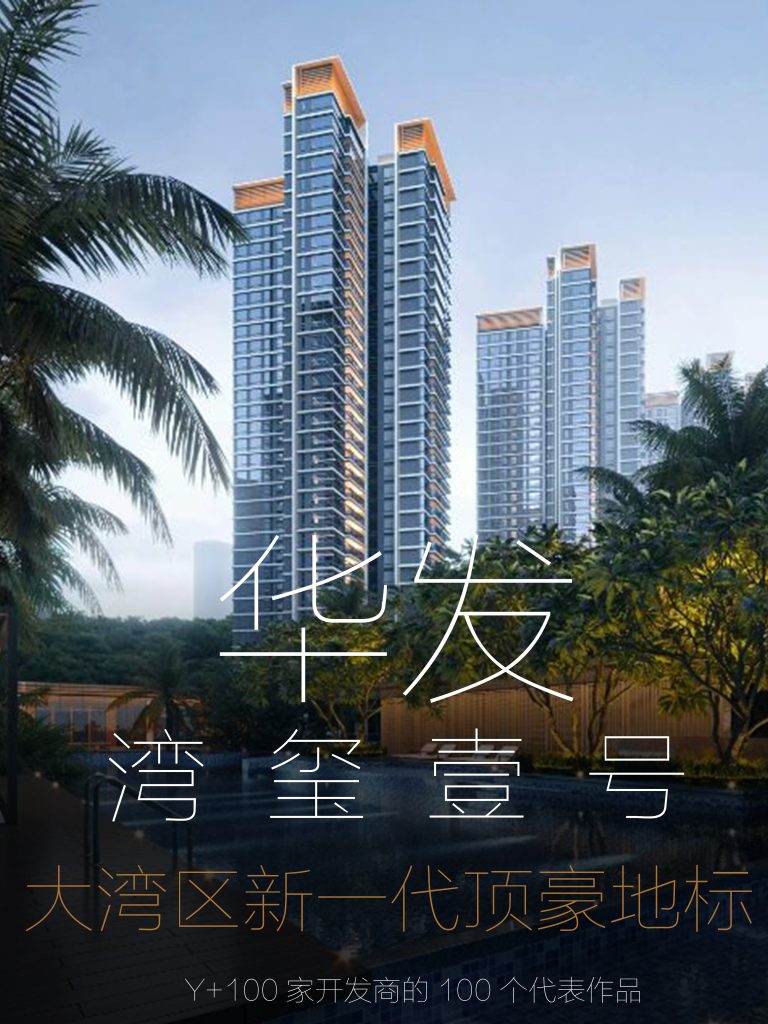经过十五年的发展,Issy-les-Moulineaux已经成为巴黎西部近郊“高环境质量”(HEQ)区的佼佼者。这让该区成为了新的经济发展平台,聚集了许多法国和国际著名公司的总部大楼。同时,不断涌现的新住宅区为城市增添了多样性,形成了现在的城市“信仰”。Issy-les-Moulineaux实施了积极政策以继续保持这种优势地位,尤其是2009年颁布了针对建筑的环境质量宪章。宪章除了提出建设低能耗建筑的要求外,还注重参与的广泛性,为建筑参与者、规划者和开发商提供可行性强的创新方式来保证住宅区、设施和商业地产的环境质量。
In the space of fifteen years, Issy-les-Moulineaux has become a leader in the field of HEQ in the inner suburbs of Western Paris.This distinction strengthens its status as a new economic platform home to the headquarters of major French and international companies. At the same time, new residential neighbourhoods have sprung up promoting diversity, today’s urban “religion”. To maintain this position, for many years now this commune has been committed to a proactive policy marked in particular by the creation, in 2009, of an environmental quality charter for the buildings constructed in Issy-les-Moulineaux. Even more demanding than the charter required for low energy buildings (BBC), Isséo+ has been drawn up in a participatory manner. It offers construction sector players, planners and developers an innovative and pragmatic tool to maintain the environmental quality of collective residential housing, facilities and commercial properties.
什么是Isséo+宪章?
– 针对Issy-les-Moulineaux地区建筑的环境质量宪章
– 于2009年4月7日实施
– 适用于集群建筑、住宅建筑、服务和商业建筑
– 由20家开放商与Issy-les-Moulineaux政府共同签订
What is the Isséo+ charter?
– Environmental quality charter for the buildings in Issy-les-Moulineaux
– Adopted on 07 April 2009
– Applied to collective, residential, service and commercial buildings
– Signed by 20 developers and Issy-les-Moulineaux
该项目位于综合发展区(ZAC),即从Issy-les-Moulineaux境内的塞纳河畔到T2站点Jacques Henri Lartigue之间的区域,是Val de Seine商业区总体规划的一部分,旨在重新开发这片废弃的工业用地,与城市中心建立和谐的联系。大区快铁C线和几条地下铁路线(8/9/10/12)贯穿本区,乘坐公交或步行就可直接到达地铁站,交通十分便利。然而T2和大区快铁C线将该区域与城市其他部分分隔开来,造成了城市发展障碍。因此,这片垂直于塞纳河、有着美丽风景、人性步道和自行车道(地面层为零售店)的区域将焕发新生,非机动交通将取代汽车成为新型的交通及出游方式。
This development is located in the mixed development zone (ZAC)stretching from the banks of the Seine in Issy-les-Moulineaux opposite Île Saint Germain up to the Jacques Henri Lartigue tramway station on the T2 line. The operation is part of the Val de Seine masterplan which aims to reclaim wasteland in this former industrial area in order to harmoniously link it with the city centre. This site is served by RER C train line and several underground lines (8/9/10/12) which are accessible via buses and footpaths. However, the T2 and RER C lines create a significant urban barrier which isolates this site from the rest of the city. Hence, the development on this islet of landscaped, pedestrian, and cycle areas (ground floor retail premises) running perpendicular to the Seine will open up this part of the city, where non-motorised transport will be a credible alternative to car travel, including for local journeys.
Carré en Seine项目符合Isséo+宪章的标准,采用特殊的建筑技巧满足了“高环境质量”和热量规范(RT 2005/65kw/hr/m²/yr)的要求。这些小型公寓的最大特征是高环境质量和对户外空间的创新性利用—即凸出于立面的面向景观和阳光的镀锌“盒体”。
Isséo+ label, Carré en Seine demonstrates the use of unusual housing techniques to meet demanding HEQ and thermal regulation specifications
(RT 2005/65kw/hr/m²/yr). Small in size, the distinctive character of these homes lies in their high environmental quality and the innovative use
of outdoor spaces, which are detached from the façade to form zinc “boxes” oriented towards the views and sunlight.
Photo © Thierry Favatier
该项目由三个具有鲜明建筑元素的建筑体构成。其中两个为矗立在Quai de la Bataille de Stalingrad码头和Rue du Passeur de Boulogne街道之间、
面积为4,673m²的公寓建筑,包括69所住房;另一个为占地6027m²、共175间房的酒店建筑,其技术设施位于第十层—这层深棕色砖砌体楼层成为
了Rue du Passeur de Boulogn街道上的新地标。
This urban construction is made up of three buildings comprised of many distinct architectural elements. First, there are two buildings comprising
69 dwellings (BBC, NF, and HEQ) erected over 4,673m² between Quai de la Bataille de Stalingrad and Rue du Passeur de Boulogne. Secondly, there
is a hotel residence with 175 rooms built over 6027m², the technical facilities of which are located in a dark brown brick tower on the 10th floor, a
real landmark on Rue du Passeur de Boulogne.
围绕着共同天井而建的三栋建筑设有软楼层,并能欣赏到塞纳河的美景。“透气空间”包括中心的景观花园(650m²)以及酒店和住宅之间的大面积
区域,有效地控制了住宅密度。面向Quai de la Bataille de Stalingrad码头的北立面混凝土墙采用了特殊的模制处理(竹子模型)以凸显新区域的入
口,不论是白天或是夜晚都是塞纳河畔上的重要亮点。90%的住宅相互连通,有双面朝向或为复式结构。
Surrounding a shared patio, the three buildings provide soft stories and views of the Seine. Density is controlled by breathing spaces, which consist
of the landscaped garden (650m²) in the heart of the development and the large area separating the hotel residence from the housing. The concrete
of the north façade of the tourist residence overlooking the Quai de la Bataille de Stalingrad has received a specific moulding treatment (“ bamboo”
model) in order to signal entry into the new district, an important and defining element both during the day and night on the banks of the Seine.
90% of the housing is interconnected, dual aspect or duplex.
Photo © Vincent Fillon
该设计赢得了2009年由开发商Eiffage、法国BTP三组(建设和公共工程)及三个候选承包商联合举办的设计/建筑大赛。Jean-Baptiste Pietri 在三
个建筑事务所中脱颖而出,与Atelier Jours景观工程公司一起被选为该项目的设计公司。在竞赛阶段,Franck Boutté工程公司加入了Jean-Baptiste
Pietri &Atelier Jours团队中。这是一个十分严谨而理性的项目,其面临的主要挑战是控制建筑密度,即在2500m²的用地上开发11,000m²的建筑体,
此外还要求符合HEQ标准规范,尤其是ZAC助理项目管理方Tribu工程公司提出的规范。
It is the fruit of a competition launched in 2009 on the design/construction method brought together by a developer, in this case Eiffage, 3rd group of French BTP (Construction and Public Works) and three proposed contractors. Out of the three competing architectural firms, Jean-Baptiste Pietri was chosen along with the landscape engineering firm Atelier Jours. During the competition stage, the Franck Boutté engineering firm was added to this team. The major challenge of this hyper-rational programme was to control density: those involved were asked, in effect, to develop 11,000m² on a plot of only 2500m² and to comply, moreover, with demanding HEQ specifications, particularly those drawn up by the engineering firm Tribu, Assistant Project Manager of the ZAC.
从项目之初,Eiffage便和建筑师Jean-Baptiste Pietri及Franck Boutté工程公司一起实施两种已经实践过的市场创新技术,将关注点放在达成项目平
衡和符合Isséo+宪章的要求上,具体做法如下:
保温空心墙
保温空心墙一方面达到美观的表面处理效果,另一方面起到保温的作用。法国公司Jousselin于2008年获得该技术的专利。
实施
35cm厚的预制模块和电缆构成了内置保温系统,包括12cm聚氨酯层、7cm白色水泥混凝土外表皮(无抹面)以及内墙的4cm混凝土层,仅中间12cm
厚的承重部分采用现场浇筑的混凝土。最后,每个模块都用复合树脂进行固结,以确保良好的保温效应。
优点
混凝土材料保证了结构的可持续性,能更好地塑造建筑外部轮廓以达到计算出的建筑密度。在承包商的批准下,可以对这种工业空心墙进行切割。
Eiffage主管Nicolas Bailleau指出:“该工艺需要极其精确的计算。可以提高施工进度,确保工程有条不紊地进行—50%甚至更多的项目在设计时就已
经完成了。”
Jean-Baptiste Pietri从这次的经历中认识到建筑项目已经脱离1980所有工序现场建筑的旧时代。他坚信建筑的未来将采用全面的预先规划,在保证合
理建筑成本的同时不必牺牲建筑规模。
此外,电脑辅助设计,即建筑信息建模(BIM)对于此类参与方众多的建筑项目来说十分重要。
From the beginning, Eiffage worked with the architect Jean-Baptiste Pietri and the engineering firm Franck Boutté to implement two proven and
marketable innovative technologies. They threw their weight into the balance of the programme created and into acquiring the Isséo+ label:
The use of an insulated cavity wall
This provides a finish and, at the same time, insulation. The technique was patented in 2008 by Jousselin, a company located in Maine and Loire
in France.
Implementation
Built-in insulation is guaranteed by the thickness (35cm) of the ready-built module to be fitted and given electricity cables. It is made up of several
layers: 12cm of polyurethane, 7cm of white cement concrete external skin (no rendering), and 4cm of concrete for the inside wall. Only the middle,
weight-bearing section, measuring 12cm in thickness, is filled with concrete poured on-site. Lastly, each module is fixed with composite resin to
ensure the absence of any thermal breaks.
Advantages
The sustainability of the structure is ensured through the use of concrete. This device is better adapted to the typology of the envelope
calculated to meet the required density; this industrial cavity wall is suitable for cutting approved by the contractor.
As Nicolas Bailleau, work supervisor at Eiffage , acknowledges, “this procedure requires highly accurate calculations to be made upstream, which
contributes to constructive and methodical progress: 50% of the project, or maybe even more, is already completed during design.”
This experience reveals to Jean-Baptiste Pietri that a project can no longer be approached in the same way as in 1980 when everything was decided
in situ. He believes that the future is a matter of comprehensive advance planning for reasons of building cost rationality without sacrificing the
architectural dimension.
In addition, in view of the growing number of stakeholders in a project of this type, it is nowadays necessary to use computer assisted design, known
as BIM (Building Information Modelling).
凉廊
该设计概念性地采用了凉廊元素,也是该项目的第二个明显特征。凉廊元素是Eiffage和建筑师Jean-Baptiste Pietri 植入城市环境中的一抹绿色。凉
廊也是气候缓冲区(夏天可抵挡强光),居者可以根据需要将其完全关闭,变成“季中”空间。
实施
这些凉廊是凸出于立面的金属结构,可以保证保温效果、提供更好的无障碍通道。
优点
凉廊除了带来舒适性之外,还是声音缓冲区和防风区。这些凉廊交错布局,不同的朝向可以确保获取最好的光线。Franck Boutté工程顾问公司的
François Xavier指出:“这些定制凉廊体现了我们与Pietri建筑公司在住宅质量上的共同理念。换句话说,我们免去了一切多余的建筑元素,只留下
了真正的功能性。这些相互联系的建筑结构充分利用了自然通风条件,凉廊外壁为可活动的铝百叶窗,其材质十分结实,实际上也可以看成是卷帘
门。”
Jean-Baptiste Pietri为凉廊赋予了类似阳台的功能,是非完全开放式的阳台。凉廊的镀锌外墙可以隐藏内部结构,同时让建筑立面在繁华街道中熠
熠生辉。在这个远离公共视野的私密空间内享受早餐将十分惬意。
Benefits of the loggias
The loggias act as conceptual grafts and are part of the second most distinctive characteristic of this programme. Eiffage and the architect Jean-
Baptiste Pietri thought them up to meet their desire to offer a “benefit” in the urban environment in which the property is located. They also serve
as a climatic buffer (solar gain protection in summer) and may be completely closed according to the wishes of the inhabitant, who can transform
them into a “mid-season” room.
Implementation
These loggias have been designed in an outer metal structure in the style of a large scaffold attached to the façade. This process prevents thermal
breaks and provides better disabled access.
Advantages
In addition to the comfort provided by these loggias -acoustic buffer and windbreak- these added spaces are staggered according to their orientation
so as to better capture the light and sun. “These tailor-made loggias form part of our shared thinking with the Pietri architect firm on housing quality”
explains François Xavier Talent from the Franck Boutté Consultants engineering firm. “In other words, any superfluous architectural aspect has been
removed in favour of true function. Here, the interconnected housing benefits from natural ventilation and the loggias are finished with steerable
aluminium blinds which, thanks to their solidity, act as rolling shutters.”
For Jean-Baptiste Pietri, the ambiance of the loggias is similar to that of a balcony, without it being fully open. The purpose of the open work zinc
walls is to hide domestic elements so as not to devalue the building façade from the street. Meanwhile, the atmosphere is sufficiently intimate for
having breakfast there out of sight of the public.
Photo © Luc Boegly
Photo © Vincent Fillon
Photo © Vincent Fillon
项目来源: Pietri Architectes
